If there is one topic that has hogged the limelight in recent years in the the conflicting, and often sometimes downright confusing, world of nutrition…it’s sugar. A quick google search of ‘sugar + health” spits out more than 799,000,000 results.
The sweet stuff is widely accessible in our food environment, and tastes, well, pretty darn good. But we’ve all heard that eating too much of it isn’t great for health.
Although, how much and what kinds are better/worse are often debated in mainstream media, and even between health professionals - making it a tricky one to navigate!
Because of this, for many the word ‘sugar’ has heavy negative connotation attached to it. However, many nutrient-dense foods, like fresh fruit and veggies, naturally contain sugar and are of benefit to health.
Today we’re exploring the topic of sugar, with the Feel Fresh Nutrition’s quick guide to!. Let’s kick it off…
FIRST THINGS FIRST, WHAT IS IT?
Sugar is the generic name for sweet-tasting soluble carbohydrates. It provides energy to the body, and is used widely across food production due to its palatability.
It occurs naturally in fruit, veggies, dairy products and grains; but can also be added to food (e.g. cereals, muesli bars, lollies, chocolates, biscuits, sauces, condiments…).
There are many different sources, with over 60 possible names; like honey, brown sugar, white sugar, maple syrup, fructose, raw sugar, honey, cane sugar, castor sugar, corn syrup, date sugar, dextrin, maltodextrin, agave, caramel, black strap molasses, beet sugar, dextrose, granulated sugar, coconut sugar, and glucose syrup - to name just a few!
NATURAL VS ADDED SUGAR
There is no need to avoid sugars found naturally in whole foods, as these are also rich in other nutrients important for good health; like fibre, water, vitamins and minerals. Their nutrient composition can also impact how the body uses the sugar - for example, fibre can slow digestion and the rate at which sugar is absorbed, which sits better with our physiology.
The harmful effects associated with too much sugar are typically linked to added foods. These can contain large amount of sugar, and are often low in fibre/protein, which means we get a lot of sugar, often more than needed, hitting our blood stream quickly! With sugar, quantity matters - and smaller amounts are better for the body to deal with, especially as sugar is an ‘energy’ food and a lot of spend our days sedentary or with just a little movement.
SOME, OF MANY, STUDIES ON SUGAR
Too much sugar, over time, is linked to a range of health concerns, with much research done in this area. Here’s some pointers we’ve found:
Studies have shown that individuals who drink sugar-sweetened beverages, including fruit juice, are more likely to develop diabetes (1) (2).
Consuming a diet high in refined carbs and sugar leads to the production of advanced glycation end products, which can cause premature skin ageing - in other words, wrinkles well before our time (3).
Foods high in added sugar can quickly spike blood sugar and thus our insulin levels, leading to increased energy. However, with foods low in fibre/protein/fat this is typically fleeting - and will often lead to a ‘crash’ in energy and craving more sugar to pick us back up (4).
Too much sugar can negatively impact oral health. Bacteria in our mouth feed on sugar and release byproducts of acid, which lead to tooth demineralisation (5).
Sugars are not only added to foods obviously sweet, like soft drinks, lollies and ice cream, but also foods you may not expect, like sauces, frozen food and condiments. The most effective way to reduce your sugar intake is to eat mainly unprocessed and whole foods.
HOW MUCH PER DAY?
There’s debate around this, with different outlet’s suggesting different amounts. The World Health Organization (WHO) recommends a maximum daily intake of free sugars to be less than 10% of total energy intake for adults and children. However for ‘better’ health, aiming for less than 5%, excluding sugars found in fruits, milk, grains and vegetables. Keep in mind free sugars are our added sugars; added to products by food producers, manufacturers or us the consumer (e.g. a spoonful of sugar in a mug of tea!). To put WHO’s recommendations into more user friendly terminology - this equates to around 12 teaspoons per day (one teaspoon = 4g of sugar). If we go below 5% of the total energy intake (around 6 teaspoons) this could lead to additional health benefits.
HOW MUCH IS IN A PRODUCT?
Identifying how many teaspoons of sugar is in a packaged food an be done pretty speedy – and this can help you to make better choices when out shopping! The food label is key to uncovering the truth about how much sugar is in your food. Here check out the ingredients (keep in mind they can have MANY different names!), as well as the Nutrition Information Panel (NIP) - see below…
HOW TO DETERMINE HOW MUCH SUGAR IS IN A PRODUCT
Check out the NIP and look for the sugar per serving. Take this and divide the grams per serving of sugar by four - this is the amount of tsp of sugar in the product per serving. Remember to look at the amount of servings per product to keep it in context!
For example if a product has 18.6g sugar per serving / 4 = 4.65 tsp of sugar per serving.
TO CLOSE…
It is great to know that you find most of the free sugars in packaged and processed foods. So, if we want to avoid sugar aim to base the bulk of your diet around fresh, whole, unprocessed foods. We’re sweet enough already! ;-)
This blog was written especially for our friends at Westpac NZ, who we’re excited to be assisting with their workplace wellbeing this year. It’s thrilling to see a company go the extra mile for their staff!



